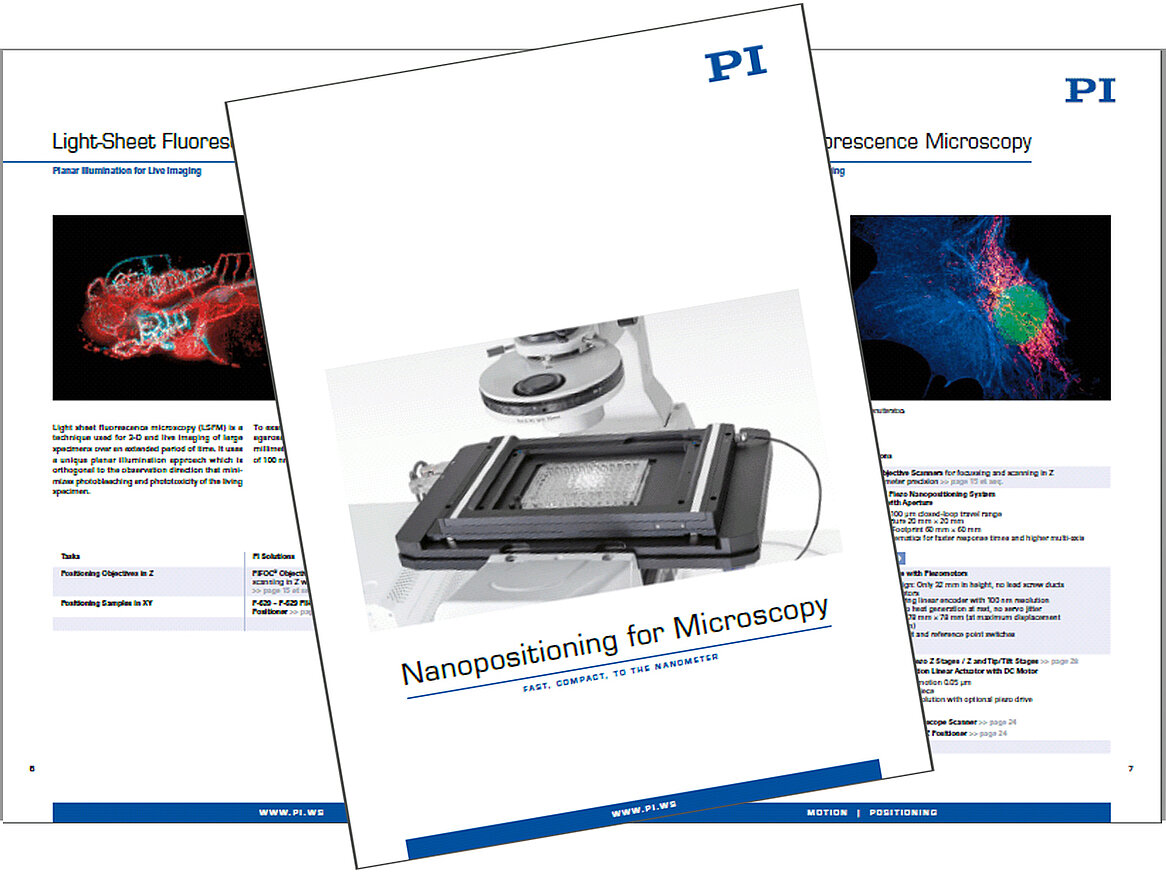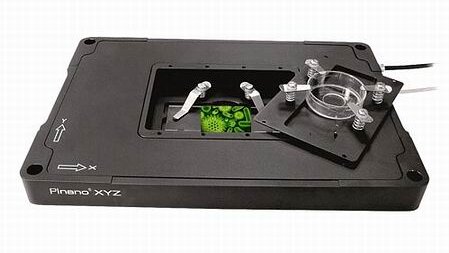High Resolution Microscopy: New Brochure Aids Selection of Best Nanopositioning / Precision Motion Control Options for the Application
Most types of super resolution microscopes, atomic force microscopes or electron beam microscopes rely on nanopositioning mechanisms to improve resolution, focusing speed, and stability.
January 7, 2019: With today’s technology, positioning of optics or samples with resolution in the sub-nanometer range is feasible and critical for improving the quality of images taken with a variety of techniques including fluorescent, widefield or laser scanning microscopy, SEM, FIB-SEM, TEM, AFM, and correlative microscopy. Even optical stereo microscopes can benefit from advances in precision positioning mechanisms.
Too Many Options? - Simplifying the Selection Process
Selecting the best drive technology for each application can become a tedious job for the microscope designer as well as the researcher. PI’s new “Nanopositioning for Microscopy” brochure simplifies this selection process with informative flow charts and application tables.
Available in print and as interactive PDF with direct links to additional information on the PI website, this comprehensive overview of nanopositioning sample stages, non-magnetic linear motor stages, fast piezo nanofocus drives, objective & lens scanners, and multi-axis motion systems with up to 6 degrees of freedom addresses the needs of both engineers and scientists.



